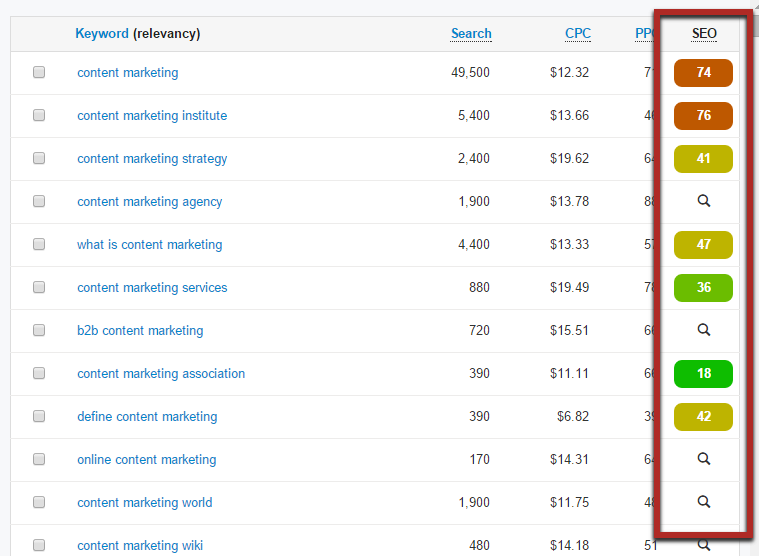When it comes to SEO, you are never really sure of your competition.
When you are optimizing a website or a particular blog post in your niche, you may be up against another upcoming online business or a well-experienced company.
If it is the former, it often becomes easier to beat them in search engine optimization and content creation. However, when you are up against companies with an entire digital marketing team and tons of resources to spend, it can be very hard to compete. This is why it is always tough to survive in a highly-competitive niche, because there are so many established and well-settled companies in there.
So, if that is the case, how do you compete with them? How do you survive in the SEO world?
This is when competitor analysis come into play. If you do it right, you can gain an almost unfair advantage over your competitors and then leverage that information to outrank them.
In this post, we are going to have a brief look on how to analyze your competitor’s backlinks and keywords. More importantly, we will also discuss what factors come into play and what your approach should be.
Competitor Analysis Can Never Be Perfect
Before we start with the nitty-gritty details, it is important to understand that no competitor analysis can ever be perfect.
Why?
Because competitor analysis isn’t a science. It’s mostly based on estimation and guesses — combined with your manual knowledge and information of SEO and a little from SEO tools.
So, does it mean that competitor analysis cannot be accurate?
No, it doesn’t mean that. It can be pretty accurate, but in order to make it more precise and accurate, you will have to spend a lot of time, resources, and efforts in it.
The Balance Between SEO Factors and Accuracy
Here is one more important concept to understand before we start with the actual tools and techniques for competitor analysis.
Competitor analysis in the SEO world is basically a trade-off between SEO factors and accuracy of the analysis.
As you must know there are around 200 Google search engine ranking factors that come into play. When you are analyzing your competitors, you can’t account for all of them. It will be just too costly and time-consuming.
Because of the fact that you don’t take all of the major factors, your competitor analysis will not be 100% accurate. On the other hand, if you want it to be more precise, you will have to take more factors into account, which will increase the required time, efforts, and resources.
So, in short, you have to find a nice balance between the two. If you don’t have unlimited resources to spend, just take enough factors into account to make the analysis good enough.
This is why I — and most other SEO professionals — suggest that you should focus your attention on two major factors:
Backlinks
Keywords
By focusing on these 2 factors, you can get a lot of important information about your competitors without spending tons of money.
Are we clear on some of the basic concepts of SEO competitor analysis? Great.
Now let’s dive deep into the more technical details.
Factor No. 1 — Backlinks
In today’s SEO and digital marketing world, backlinks are one of the most important search-engine ranking factors.
It can very accurately represents the quality, credibility, and trust of a website you are competing with. Moreover, the quality and total quantity of backlinks also represent how valuable search engines believe your competitor’s website is.
Pro Tip: Before you start competing with a particular web page or piece of content, always check the backlinks it has received. This simple analysis can show you how difficult would it be to outrank that.
For backlink analysis, I suggest using Majestic. It’s an excellent SEO tool that instantly gives you a lot of useful information about your competitor’s backlinks.
Suppose that you are in the niche of “SEO and link building niche”, and you wish to outrank Brian Dean’s “Definitive Guide to Link Building”. Use the URL of that post and insert it into Majestic SEO’s search bar. You will see an analysis screen similar to this.
As you read the report, you can find out that this particular post/guide has more 43,000 backlinks from 236 different domains.
That’s a lot of backlinks. And you can safely say that it has been a very popular piece of content on the web for this given topic, and it will be no easy task to beat it. You can then use this analysis to determine whether you should go after it or not, or you if you need to adjust your content marketing strategy in accordance with it.
There is one more thing to note here.
The total number of backlinks here shows the quantity of backlinks. But as you must know that only the quantity of backlinks don’t really matter. What matters most is the quality of those backlinks.
Majestic SEO does a good job indicating that.
In the screenshot, you can see two scores:
Trust Flow
Citation Flow
In theory, the “Trust Flow” represents the quality of those backlinks while the “Citation Flow” represents the total quantity.
Another pro tip is to calculate the “trust ratio” with the help of “Trust Flow” and “Citation Flow”.
Use the following formula to get an even better picture.
Trust Ratio = Trust Flow / Citation Flow
When you divide the trust flow by citation flow, you get the “Trust Ratio”, which represents the actual quality of those backlinks.
If the answer is anywhere near 1.0, you can safely assume that the quality of those backlinks is very high, and that those backlinks were not generated via spammy and questionable techniques.
If you don’t like Majestic, you can also use Ahrefs for analyzing your competitor’s backlinks.
Factor No. 2 — Keywords
Analyzing keywords is a little different than analyzing backlinks. You will also need to apply your own knowledge and skills to pick out the ideal keywords.
For analyzing profitable keywords, you are going to need a tool. I recommend using KWFinder, mainly because it is really, really simple to use.
The concept is really simple.
You insert your main keyword in KWFinder’s search bar and hit the “analyze” button.
See the following screenshot.

This particular tool instantly provides you with many useful sets of information, e.g., different keywords (based on relevancy), search volume, CPC, PPC, etc. Most importantly, it gives you an “SEO” score — the one that is highlighted in the image.
This SEO score represents the difficulty of a keyword. It’s color-coded with 3 different colors: red, yellow, and green.
Red means the keyword can be very difficult to outrank, while green means it is easy.
You can also use the Moz Keyword Difficulty Tool, which basically has the same functionality.
One of the major differences between the two software is that the Moz Keyword Difficulty Tool shows the difficulty of a particular keyword as a percentage.
In Conclusion
Competitor analysis can be a tricky business. It definitely requires some extra time, money, and resources. But if you do it right, it can save you a lot of wasted efforts.
This is what your strategy should be:
Define your niche. You can’t do anything without it. Make sure you are dealing in a very particular niche that hasn’t been yet covered on the web.
Define the audience you’re catering to. You need to be talking to a very specific group of target audience. You just can’t be there for everyone.
Study your competitors. See what they have been doing. And more importantly, notice what they haven’t been doing.
Use the keyword tools to identify potential keywords with low difficulty score.
Once you have shortlisted profitable keywords with high search volume, low competition, and low difficulty score, analyze your competitors.
Analyze the backlinks for those posts and see if you can compete with it.
Don’t just go for the quantity of backlinks. Also consider the quality of those backlinks and the referring domains. Pay attention to “trust flow” and “citation flow”. Also, use the “trust ratio” formula.
By doing this extra bit of research, you can craft a content marketing strategy that actually works, brings traffic, and boost your SEO efforts.
